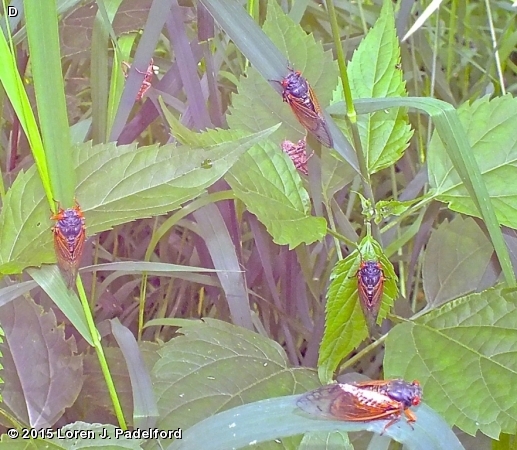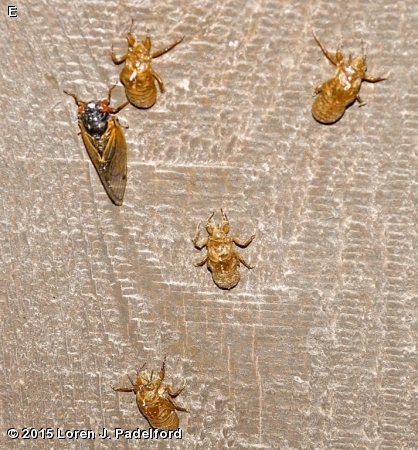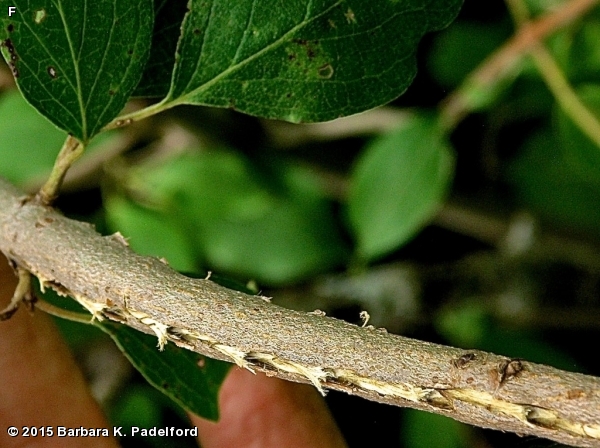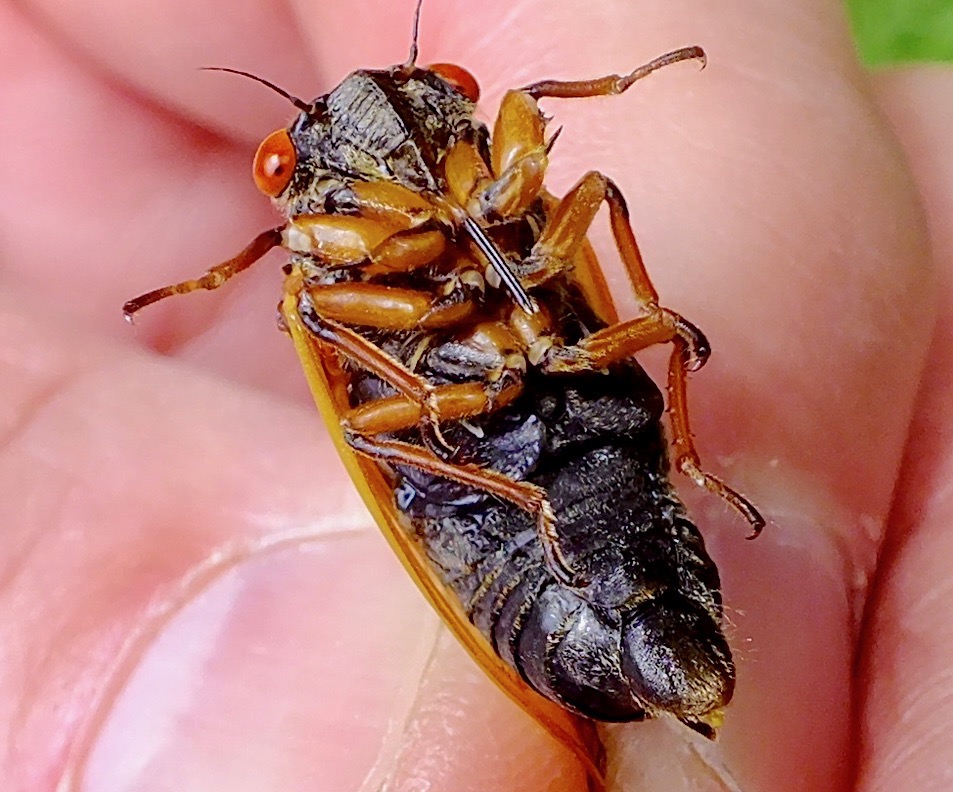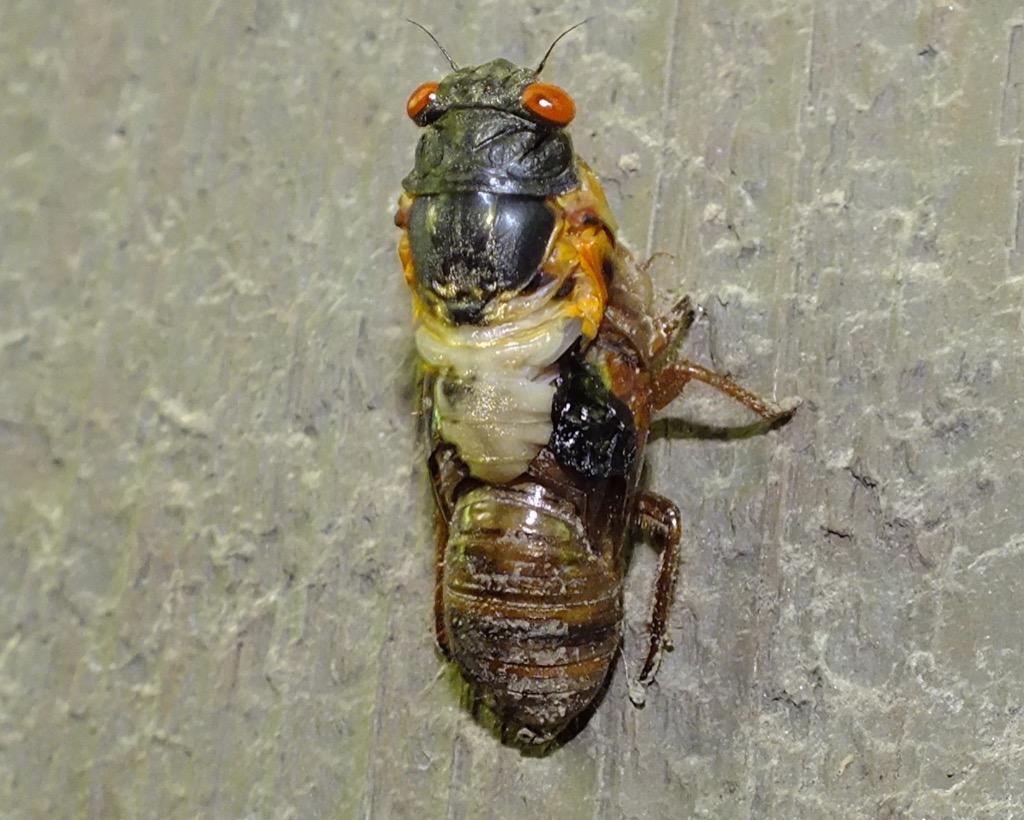
Magicicada cassinii is approximately 1 inch (24-27 mm) long. It is all black on the face, thorax and abdomen with bright red eyes. The wings are clear with orange and black veining and a darker black M or W in midwing. The eyes are bright red. The legs are reddish.
Magicicada cassinii is a 17-year cicada in Brood IV. Brood !V cicadas emerged at Fontenelle Forest and Neale Woods in the first week of June 2015. It will not appear again in this area until 2032. The emergence of cicadas is known by the presence of the shed exuviae on buildings, vegetation and tree trunks and by the cicadas flying from tree to tree. They are probably heard before they are seen as their chorus dominates other forest sounds. Cassinii’s call is a single buzzy note sustained for a few seconds.
The female lays eggs in young twigs of trees. After hatching, the larva drops to the ground and burrows underground where it feeds on the xylem on plant roots for 17 years. When it emerges it is soft and remains a teneral for 5 to 7 days. When it becomes an adult it flies to the tree tops and joins the other cicadas. The males are engaged in singing choruses to attract females. The females choose a mate and the mating process begins. The other magical cicada that occurs here is M. septendecim which is a little larger than M. cassinii and has a red spot behind the eye and wide orange bands on the underside of the abdomen. The third species in Brood IV, M. septendecula, occurs in southeast Nebraska at Indian Cave State Park. The 17-year Magicicada is the longest lived insect in North America and the 2nd longest lived insect in the world.
Disclaimer: The content of NatureSearch is provided by dedicated volunteer Naturalists of Fontenelle Forest who strive to provide the most accurate information available. Contributors of the images retain their copyrights. The point of contact for this page is: Babs Padelford.



